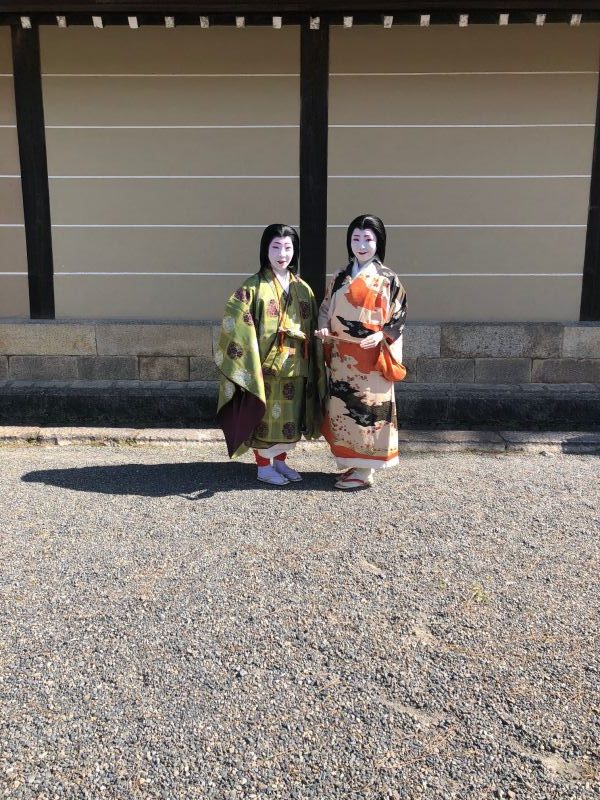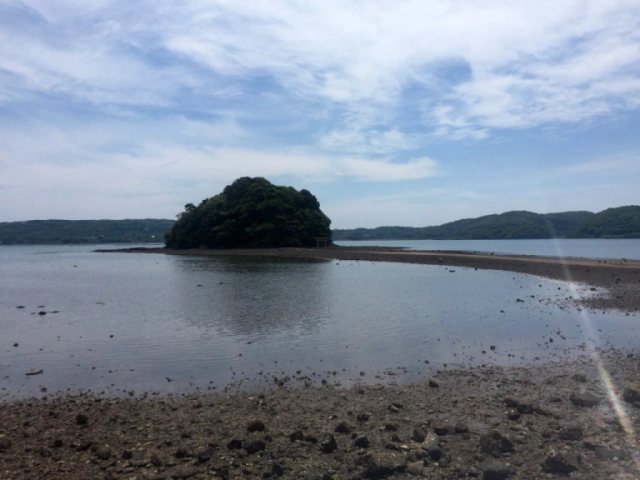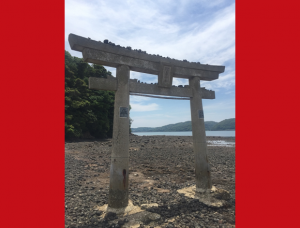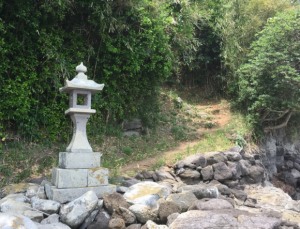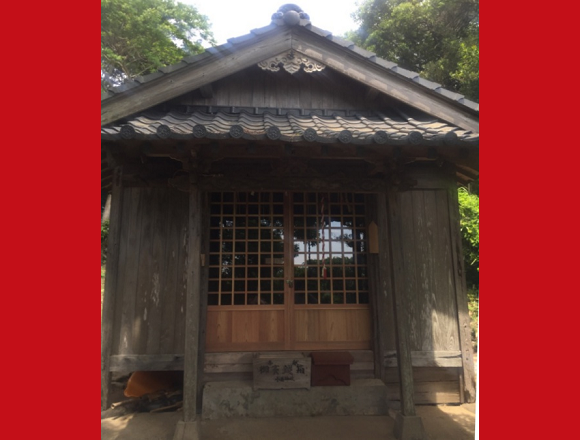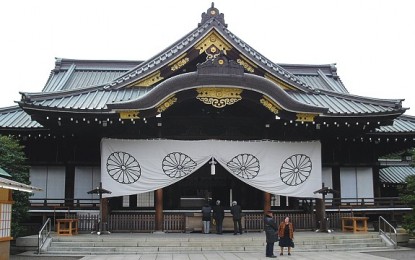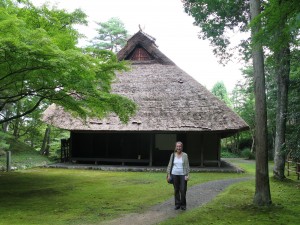
Dr Jann Williams, in front of a farmhouse at Oomoto
Green Shinto supporter Jann Williams has for the past four years been researching the association of Elements with Japan – this includes the physical elements, the Chinese Five Elements, as well as the elements used by Buddhist sects. You can see the results of her research on her wonderful and beautifully illustrated blog at https://elementaljapan.com/.
The posting below is an abridged version of her latest posting about climbing Kyoto’s highest mountain, Mt Atago, to the west of the city. Unusually she did this in the form of a pilgrimage with a Shugendo group and was able to participate in the prayers and rites involved. For the full-length and beautifully illustrated original post, please click here.
Some other posts from Jann’s blog of interest to Green Shinto readers include: pilgrimage on Mt Ontake; fusui (the Japanese style of feng shui); Japan – a destiny drawn by nature.
*************
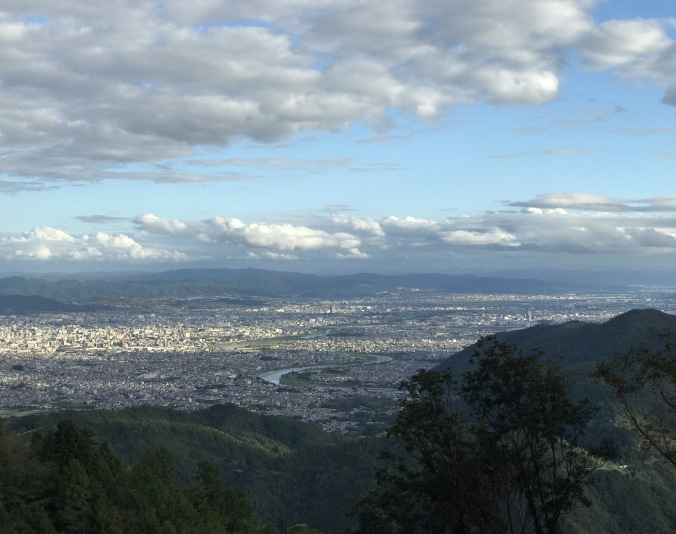
View over Kyoto (photo by Jann Williams)
Mt Atago, Kyoto: exploring the energy of a sacred mountain
October 11, 2018 by Jann Williams (taken from her Elemental Japan blog)
Mt Atago is the highest mountain in the ranges that flank Kyoto. It has been a place of Shugendo practice and worship for over 1300 years. Ever since learning that a deity that provided protection from fire was enshrined there, my heart was set on climbing the mountain.
The first opportunity to ascend Mt Atago arose on the 21st of May 2017 when a friend and I hiked the 3.7 km trail to Atago Jinja at the summit. The second ascent took place on the 7th of October 2018 as part of a Shugendo pilgrimage with the Shugendo group, Wani-ontakesan.
Both visits to Mt Atago, with their different seasons and different circumstances, were compelling in their own way. Both were connected to the element of fire and in October 2018 to the phenomenal power of typhoons. The energy of the mountain and the long history of veneration at the mountain was palpable.
Mt Atago was opened to pilgrims by En-no gyoza, the founder of Shugendo, and Taicho-zenji around 1300 years ago. Taicho was a sacred man who opened Hakusan in Ishikawa Prefecture. Kyoto has changed in many ways since Shugendo practices started on Atagosan, including how new buildings are constructed. One constant has been the ongoing risk of fire to life and property, albeit at reduced levels in modern times. The Atago Jinja, found at the summit of the mountain, is the head of 900 Atago Shrines across the country that offer protection from this erratic element.
The view from my accommodation in Kyoto looks to the northwest, with Mt Atago evident on the horizon. Combined with my interest in fire as a sacred element, there is little wonder that I have been drawn to the mountain.
It was only a matter of time until I made the journey to Mt Atago. Climbing the mountain twice exceeded my expectations, providing a contrast on many levels. The Shugendo pilgrimage in October 2018 was particularly enlightening, further opening my eyes to the energy, awe and wonder of Atagosan. It was a privilege to share it with members of the Wani-ontakesan community.
At 924 m, Mt Atago is the highest mountain in the ranges that help define Kyoto. Many sacred sites are found on the mountain and you could spend many days exploring and learning about the mountain and its history. Kuuya Falls are an important part of the Shugendo connection with Mt Atago. I would like to visit there one day.
There have been several twists and turns in the long religious history of Mt Atago, especially after the forced separation of Shinto and Buddhism at the start of the Meiji era. It is a testament to the energy, vitality and relevance of the mountain and its Gods that it continues to attract tens of thousands of visitors each year.
Fire prevention signs are found at the start of the trail to Atagosan, starting just in front of the torii entrance. They continue along the path to the summit. Along the main path there are 40 signs at around 100 metre intervals that assist in keeping track of the progress. The total distance to the summit from Kiyotaki is 3.7 km. It helps to take occasional breaks along the way to rest and rehydrate. On the pilgrimage I learnt that the short rest stops are called ‘sho kyu shi‘. That is a useful phrase to remember.
The busiest and most crowded time of the year at Atagosan spans the evening of July 31 to the dawn of August 1 when Sennichi Mairi (One Thousand Day Worship) is held. Lanterns illuminate the way up the mountain. Tens of thousands of visitors make the pilgrimage to pray for 1000 days of protection from fire and receive a charm to put in their kitchens. This overnight visit to Atago Jinja gives worshipers as much benefit as visiting the Shrine 1000 times.
Many local people make the annual pilgrimage to give the charms to their neighbourhood. The element of fire is uppermost in the mind of most visitors to Atagosan. I bought a fire protection charm in May 2017 during my first visit to Atagosan. Added protection from fire was gained during the 2018 pilgrimage when Yasunari Okamoto, a Shugendo Master, prayed for the safety of our bushland home.
The pilgrimage to Atagosan in October 2018 brought another element to the uppermost of our minds. The element of wind. In the month prior to the pilgrimage two Super Typhoons had passed through the area. The high velocity winds tore large trees up by the roots and snapped others at the base. It will take some time for the path to the summit and Atago Jinja to be cleared.
The rain leading up to the pilgrimage strengthened the aroma of the broken pine branches. The recent promotion of the health benefits of ‘forest bathing’, developed as a concept in Japan during the 1980s, came to mind. The main Shrine houses five sacred beings including Atago Gongen, who provides protection from fire. We prayed at several shrines and participated in a Shinto Ceremony in the main Shrine, something I was only able to watch during my 2017 visit.
There are a number of images of boars around the Shrine. The animals were ridden by Shogun Jizo, the Buddhist avatar of Atago during the medieval period. As a consequence, the Year of the Boar (next held in 2019) and Day of the Boar are important at Atago Jinja.
There are shrines to different deities in the grounds outside of the main Atago Jinja where prayers to the Gods were conducted during the pilgrimage. The services led by the Shugendo Masters included prayers for world peace, recovery from disaster and providing help to families.
Our last stop before leaving the summit of Mt Atago was a Shrine dedicated to the Atago Tarobo, the King of the Tengus. An Oza session was conducted here where the kami spoke through Motoshige Okamoto. My post on the 2018 winter pilgrimage to Mt Ontake refers in greater detail to these remarkable occasions, as well as providing more information on Shugendo. It is a religion that has strong and specific links to the elements.
Twin Torii are found at each end of the path leading to Shrine dedicated to Atago Tarabo, the King of Japanese Tengu. The amount of debris from the canopy of surrounding conifers was significant. When I spoke to Doukan Okamoto, one of the Shugendo Masters, about the damage to the forest he spoke about the cycle of life and how both people and plants are born and die. Death and rebirth are fundamental tenets of the Shugendo faith. The elements play a crucial role in the process.
Going downhill can sometimes be as challenging as going up, especially on uneven surfaces. As we reached the bottom of the climbing route I noticed for the first time the ruins of the Cable Car that operated on Mt Atago for a short period from the late 1920s. It was used to transport people to tea-houses, ski-fields and the like. You would hardly know they existed today. Through all of the changes on and to Atagosan, the pilgrimages continue. Having experienced the energy of the mountain I can appreciate the attraction.
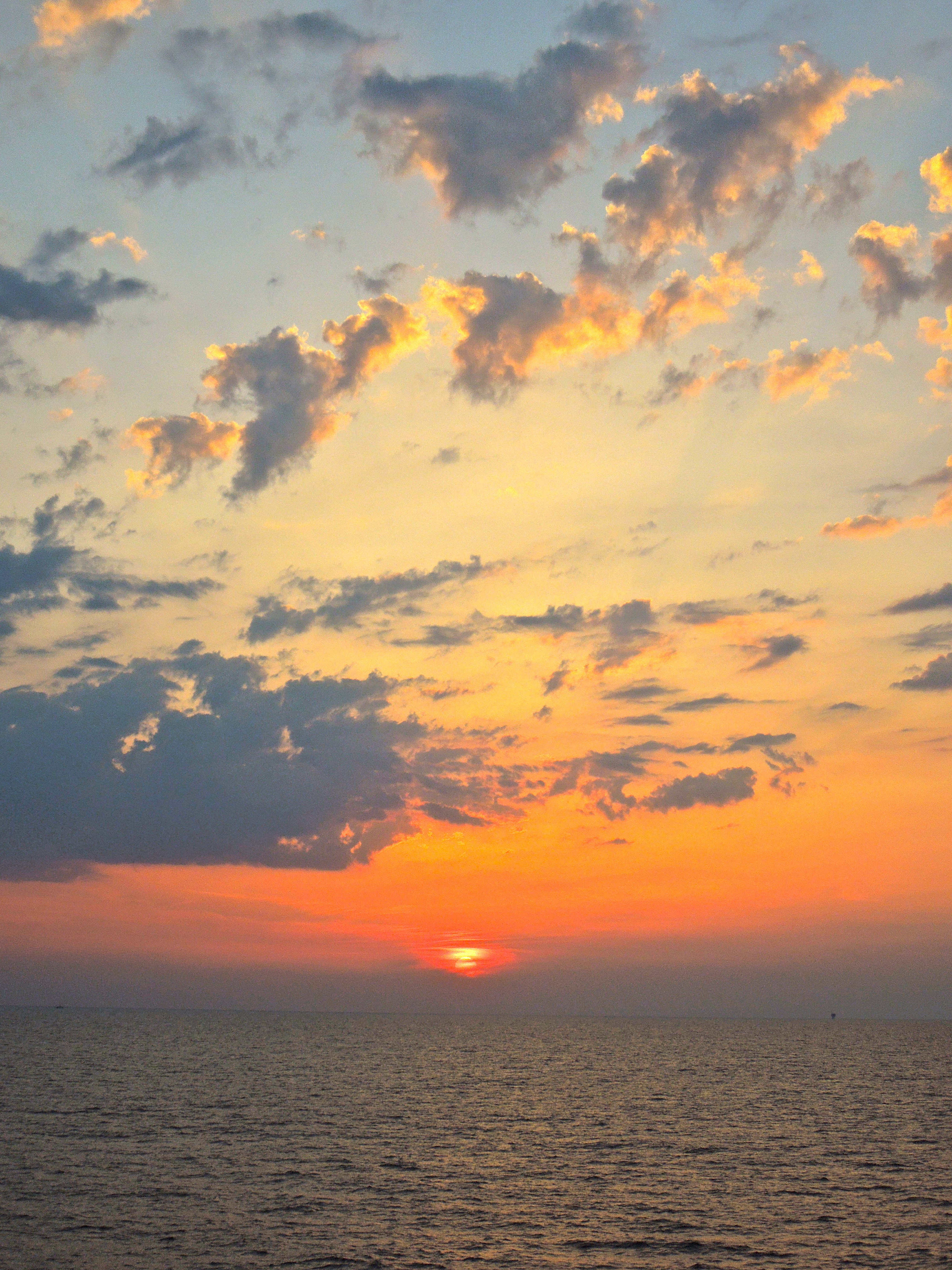

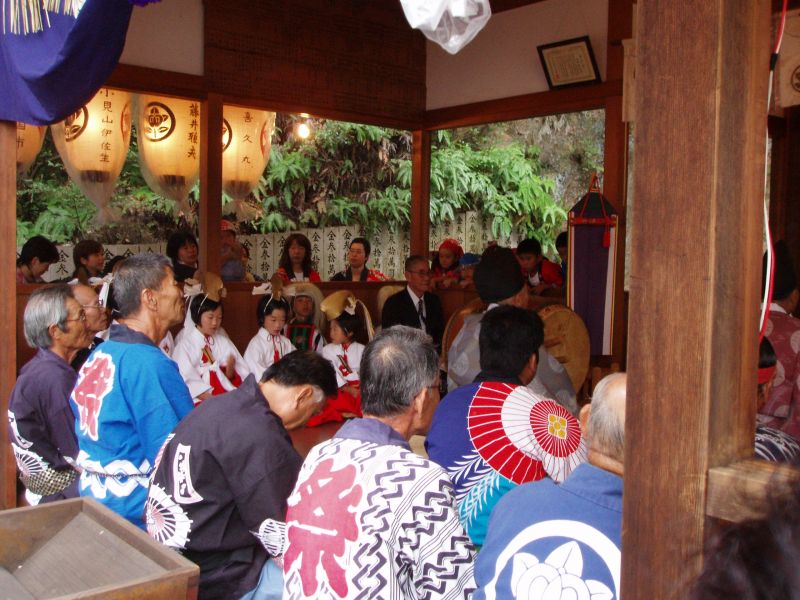 Yesterday I had lunch with Danish Shinto expert Esben Andreasan. He kindly gave me his book on “Japansk Religion” which contains s a compilation of 18 significant texts on Shinto divided into sections on Mythology, Ritual, Nationalism and Modernity. Some of the pieces look intriguing and I’d dearly love to read them. Trouble is I can’t read Danish!
Yesterday I had lunch with Danish Shinto expert Esben Andreasan. He kindly gave me his book on “Japansk Religion” which contains s a compilation of 18 significant texts on Shinto divided into sections on Mythology, Ritual, Nationalism and Modernity. Some of the pieces look intriguing and I’d dearly love to read them. Trouble is I can’t read Danish!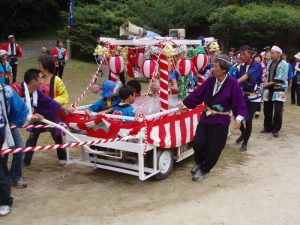
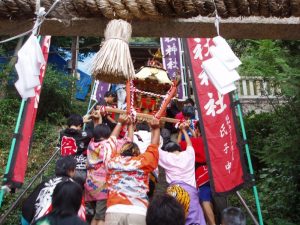
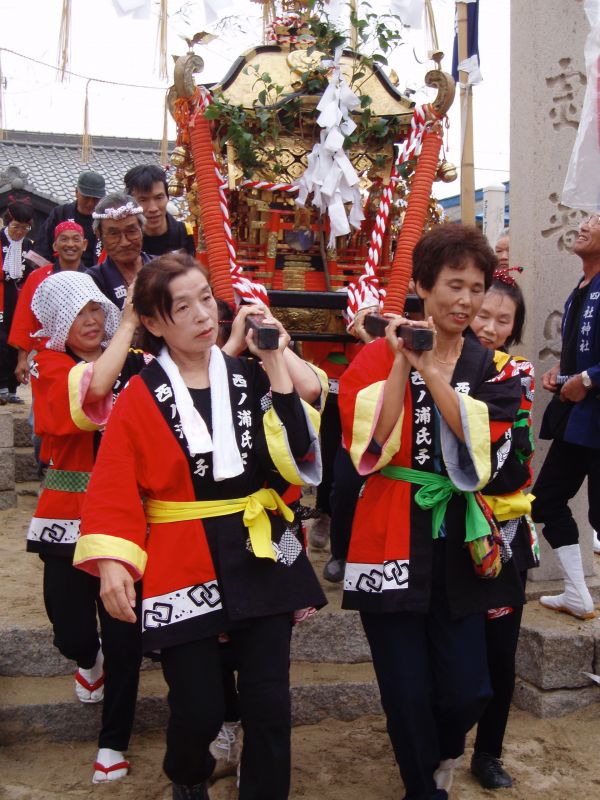
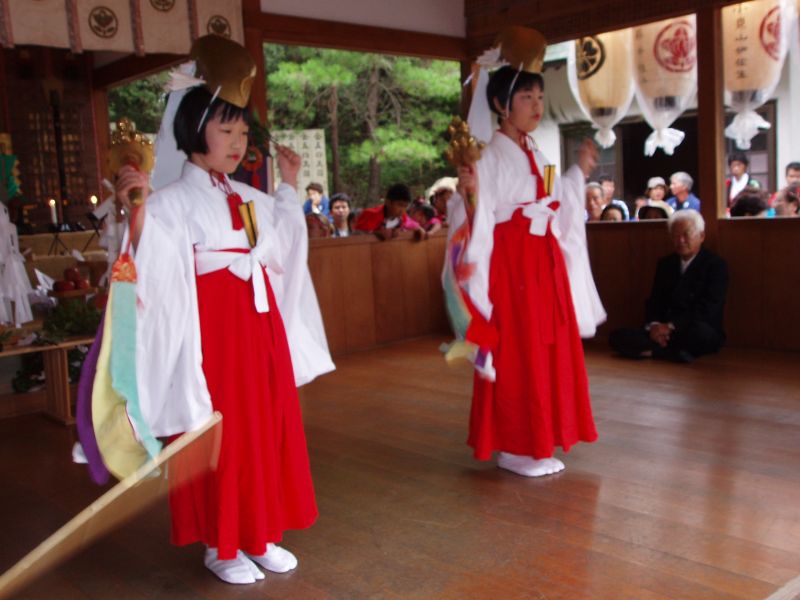
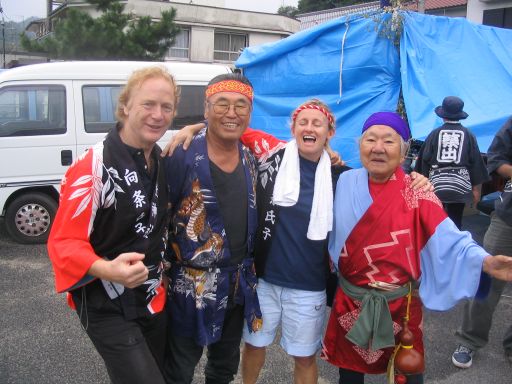
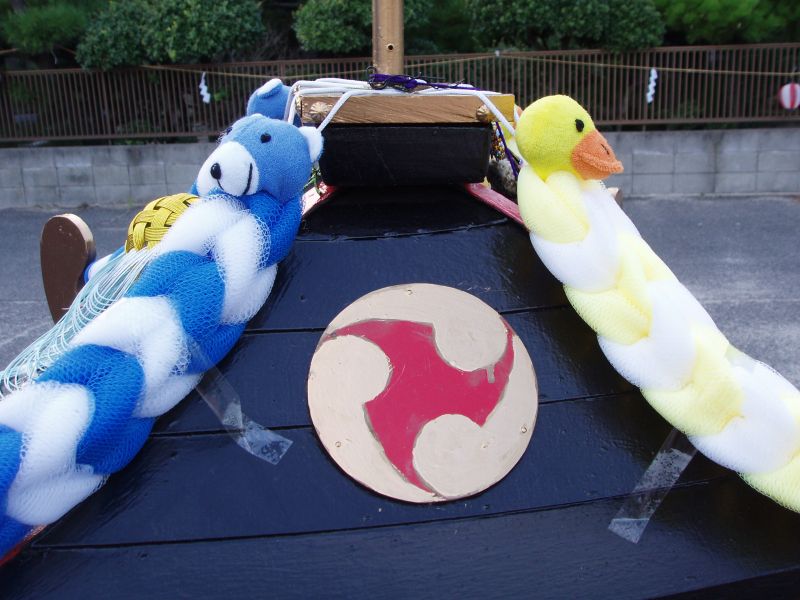
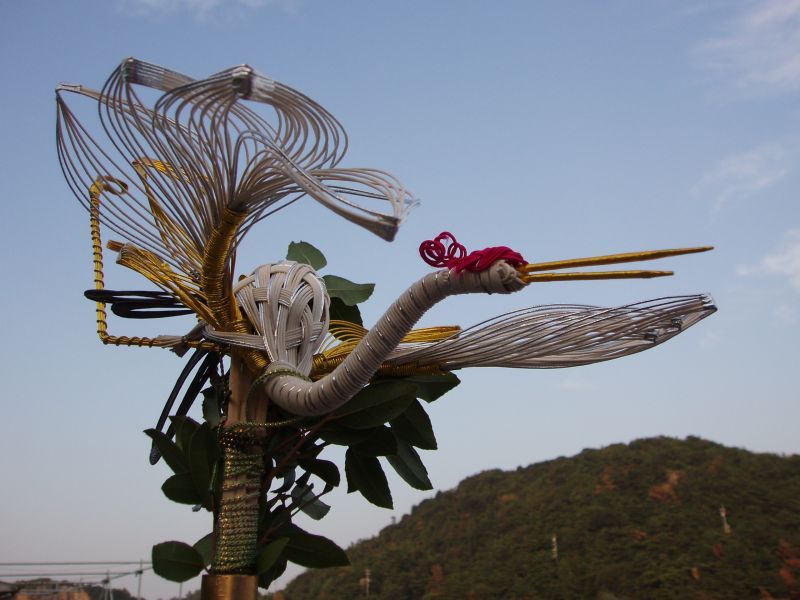
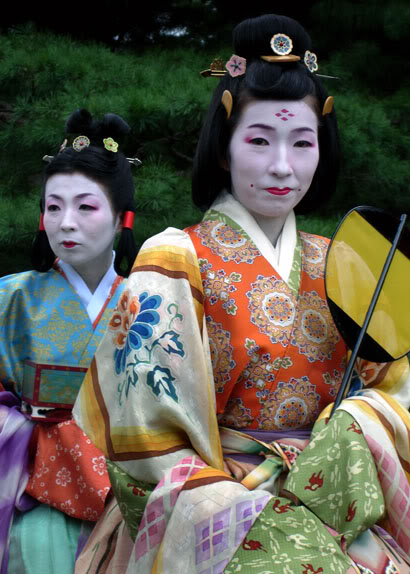
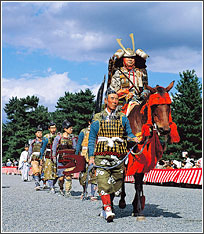
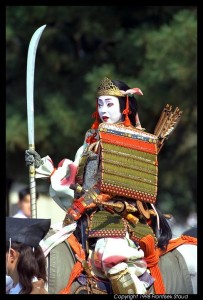
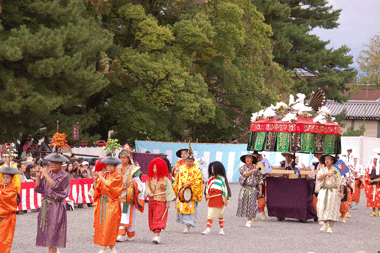
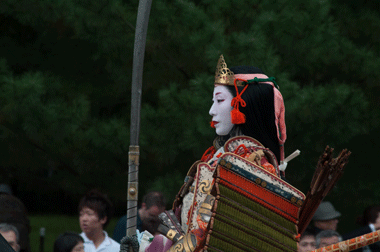
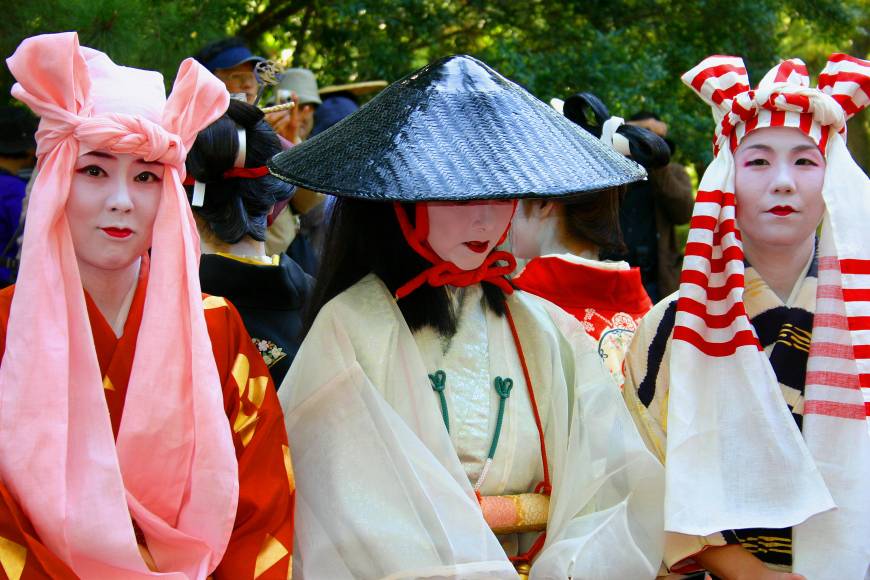 One of the most appealing aspects of the festival is the authenticity of the costumes, which were made of material as close to the original as possible. Even the weaving and dyeing was done in the manner of the age they represent.
One of the most appealing aspects of the festival is the authenticity of the costumes, which were made of material as close to the original as possible. Even the weaving and dyeing was done in the manner of the age they represent.
